Base de connaissance¶
Gérer, éditez, et réorganisez les articles de la base de connaissance depuis le panneau base de connaissance.
This feature is optional; if you don’t see it in the main menu, that means your administrator hasn’t enabled it yet. Administrators can learn more on our admin documentation.
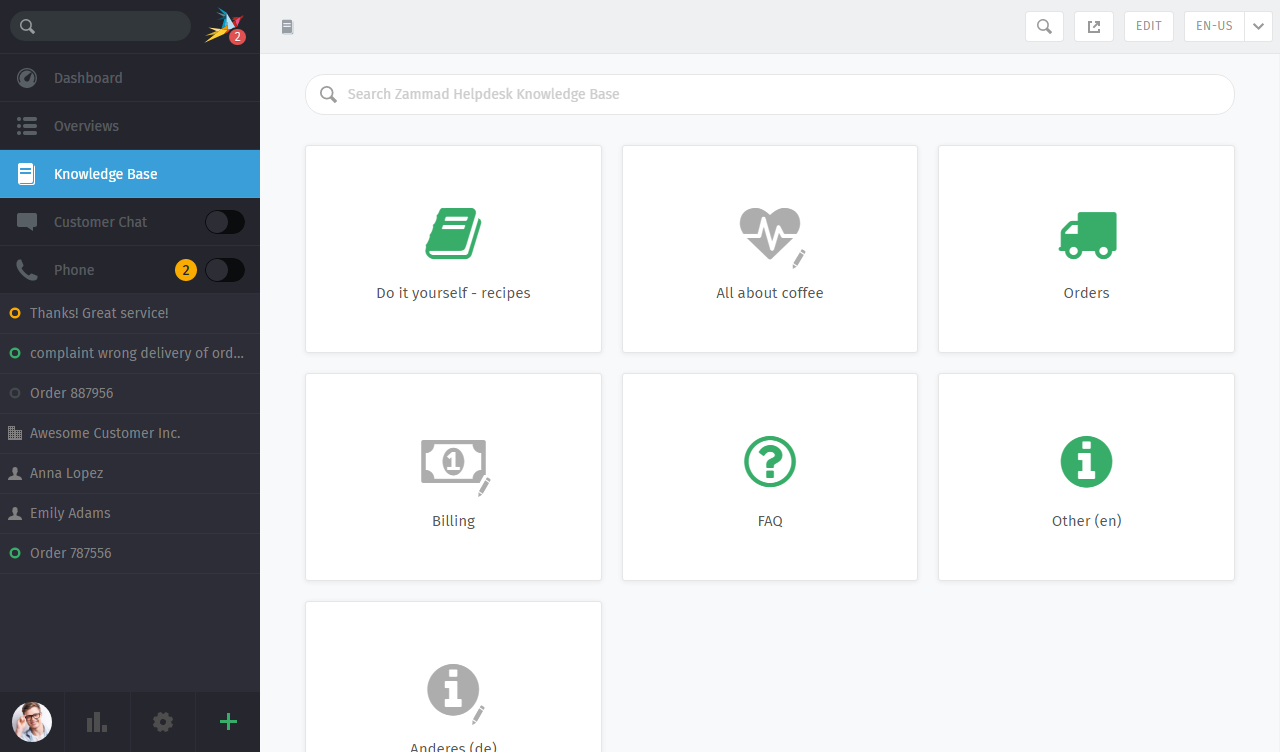
Le panneau de la base de connaissance commence dans un mode prévisualisation. Avec de rares exceptions, le mode prévisualisation montre à quoi ressemblera la base de connaissance.¶
Démarrage¶

Utilisez le bouton ↗️ dans la barre d’outils en haut pour voir la base de connaissance publiée.

👆 Dans le mode d’édition, utilisez le menu main droite pour naviguer au travers de la base de connaissance.¶
Use the “Edit” button in the top toolbar to switch into Edit Mode (and back again). If you can’t see the « Edit » button, you should talk to your administrator about granting you the appropriate permissions. By default, agents are not permitted to create, edit, or manage knowledge base articles.
Changer de langages¶

Utilisez le menu langage pour voir ou éditer les traductions de la page actuelle.
If you select a language, in which the page hasn’t been translated into yet, the behavior depends on the state of the page:
- dans le mode édition
Les pages non traduites sont marquées avec un ⚠️ panneau attention:
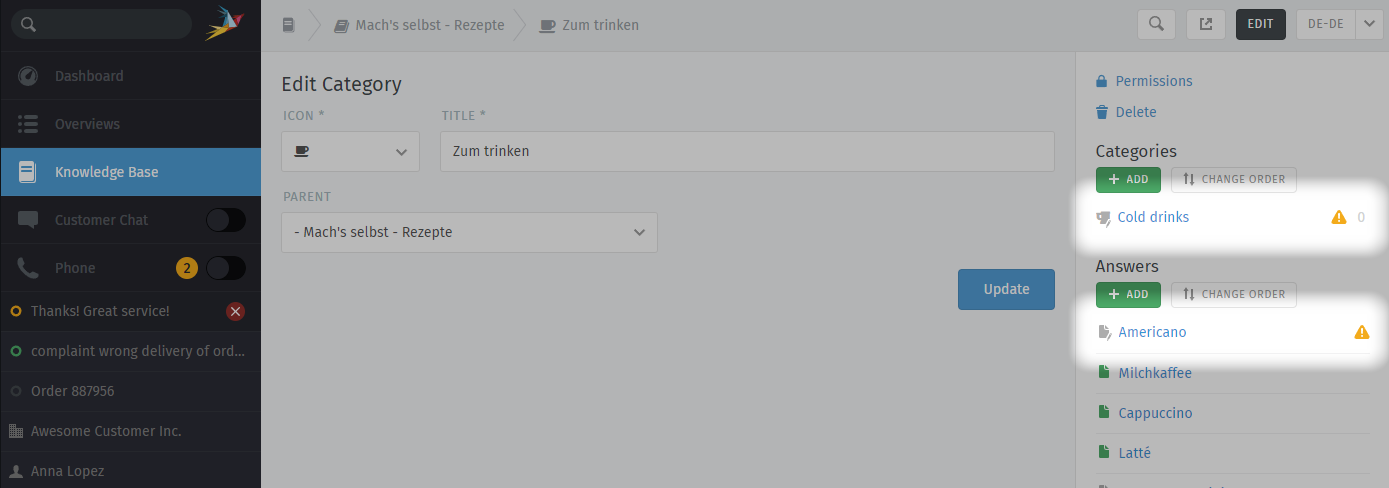
- dans le mode prévisualisation
Les pages non traduites sont seulement visibles pour les utilisateurs ayant les permissions d’édition:
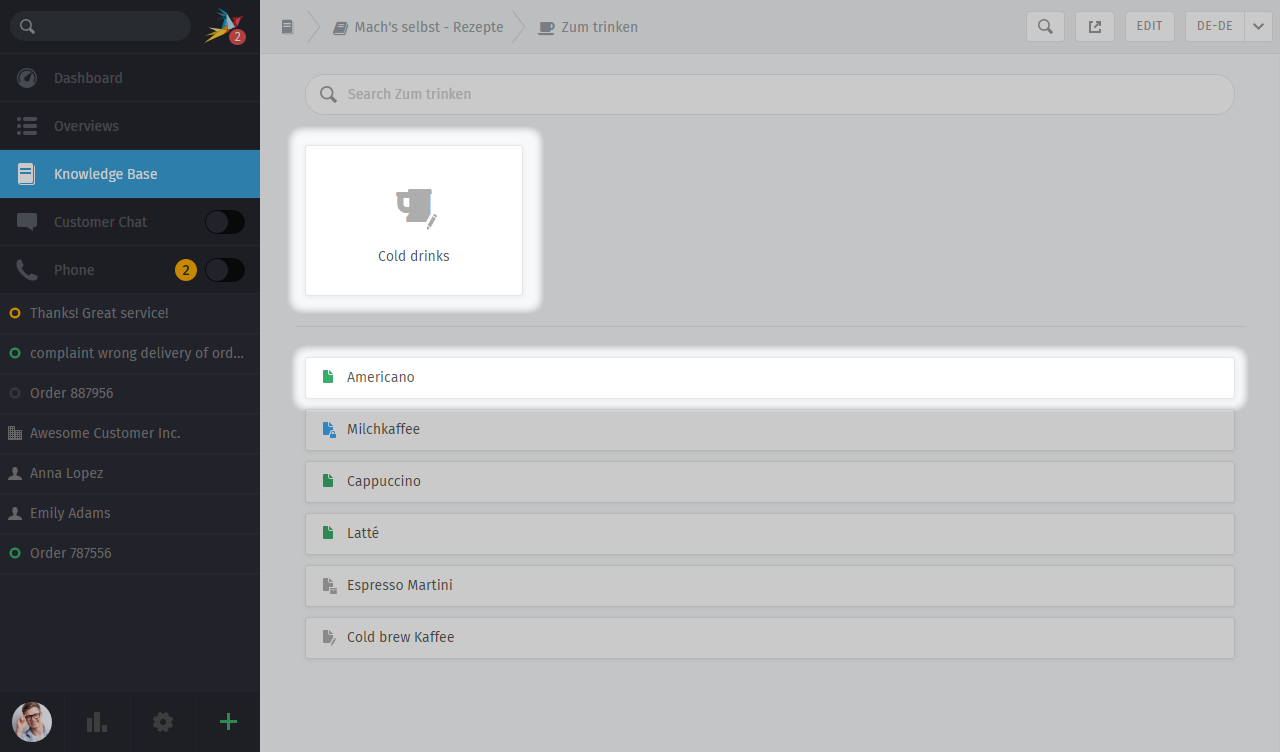
- dans la base de connaissance publiée
Les pages non traduites sont toujours cachées:
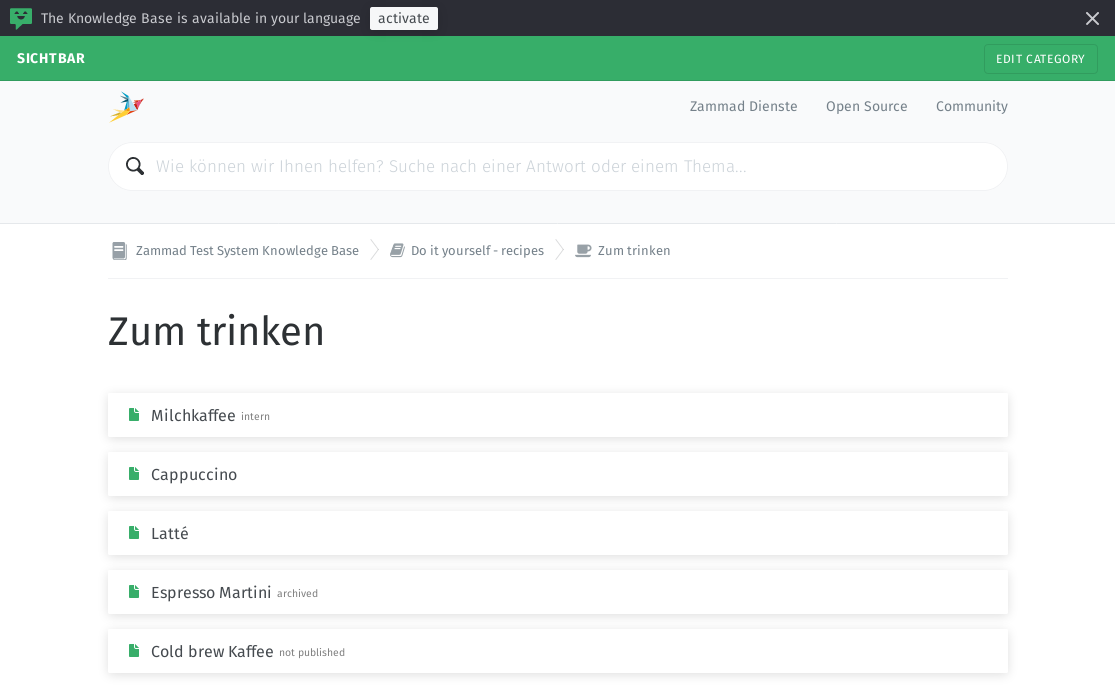
Using RSS Feeds¶
Zammad allows you to subscribe to either the knowledge base as whole or to specific categories. There’s both a public and an internal option to do so.
By default, RSS feeds are disabled. If you wish to use the RSS function, talk to your administrator about enabling the function.
The RSS button of the public knowledge base page is located at the bottom of each page. If enabled, the button will be available to anybody visiting the page.
The internal RSS button can be found on the upper right next to the edit button. It’s available on every internal knowledge base page you display.
Pressing the the RSS button will provide up to two RSS feeds to subscribe to.
Avertissement
Keep in mind that internal RSS links contain personal access tokens. Never share these URLs with third parties!
If you want to revoke the access and renew your token, you can do so in the RSS modal.
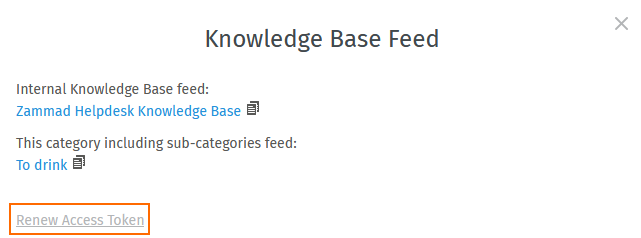
Éditer des catégories¶
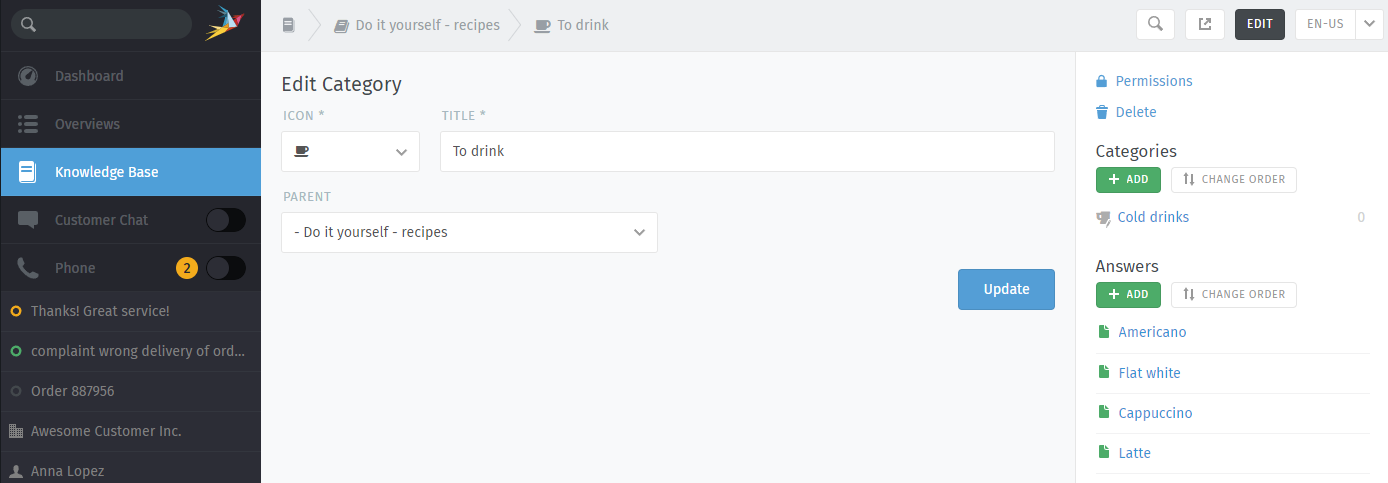
You can relocate a category using the Parent menu. Doing so, all of its articles and sub-categories will be relocated with it.
You can delete categories by clicking on the 🗑️ Delete button. Categories can only be deleted once all of their articles and sub-categories have been deleted or relocated.
Granular Category Permissions¶
Granular category permissions are great to have individual access levels on a role level. Using the granular permissions of a category deactivates the default visibility behavior and applies the permissions you’ve chosen instead.
This allows you to divide user groups on a e.g. subscription level to reduce the information load for users that don’t need the information.
The roles require knowledge base reader permission. Your administrator has to provide the relevant groups with reader permissions for the knowledge base. If you’re unsure, please ask your administrator to configure the role permissions accordingly.
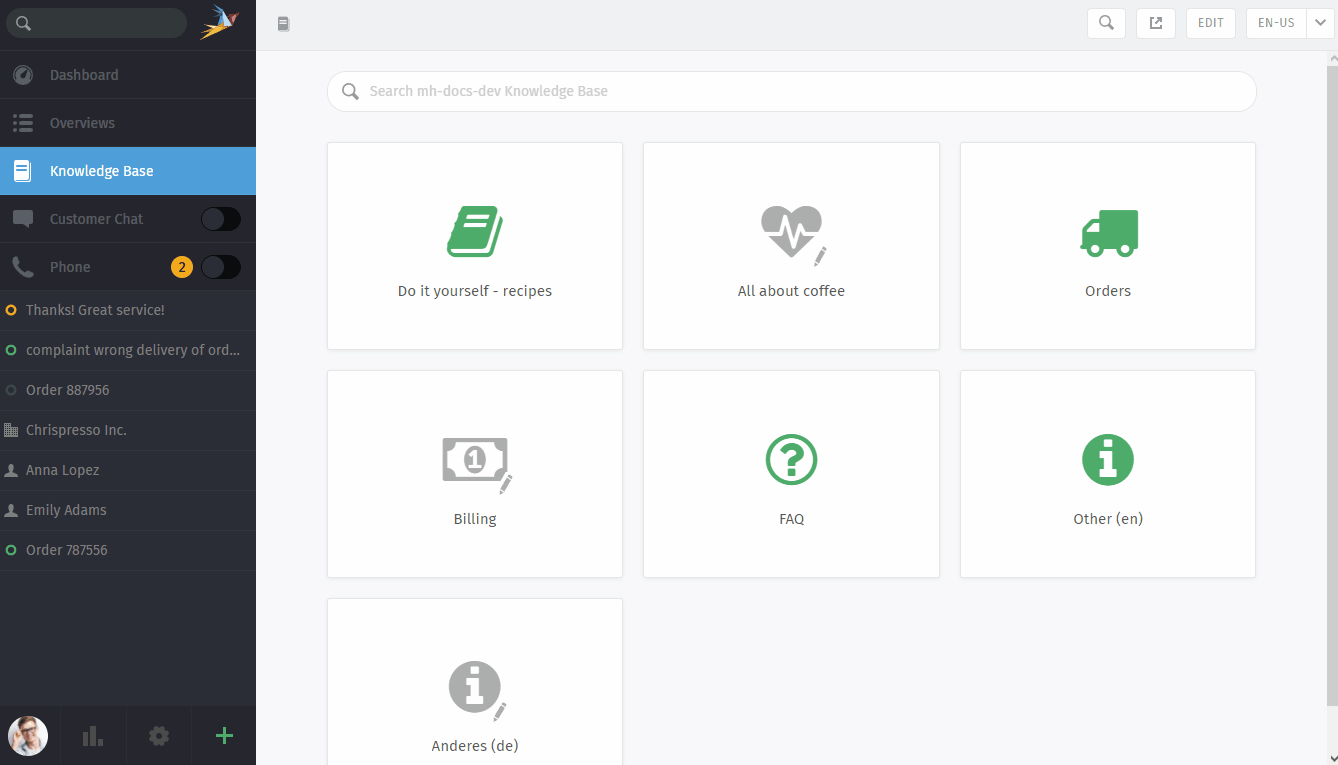
In general, permissions of a parent category are inherited! If you want to grant edit permissions for a sub-category for a specific role for example, set the upper level to « reader » and the desired sub-category to « editor ». The same workflow applies to granting « none » permissions, effectively hiding a given sub-category. The other way round is not possible. A role with « editor » permission has full access to it’s sub-categories, so it’s pointless to limit it’s permissions. « None » permissions also cannot be changed down the tree since there would be no path to access permitted sub-categories. If you can’t select permissions in the table, this could be the reason.
Avertissement
Be aware that public answers are always available!
Knowledge base reader permission means that affected users can see internal answers. This is a potential issue if you’re not dividing carefully!
Éditer des réponses¶

L’éditeur de la base de connaissance est proposé avec les même capacités d’édition en texte riche disponibles lors de la rédaction des tickets Zammad. Ce qui signifie que vous pouvez utiliser les mêmes raccourcis clavier pour insérer du texte formaté, des listes à puce, et plus encore. Vous pouvez même ajouter des pièces jointes et des liens!
- Different link types
- 🔗 liens web
URLs qui pointent vers d’autres sites web.
- 💡 Lien réponse
- Références internes vers d’autres réponses de la base de connaissance.(qui ne casseront pas si l’URL de destination change.)
- 📋 Tickets liés
- Références internes vers des tickets Zammad.(visibles seulement dans les modes prévisualisation et édition.)
- 🏷️ Tags
- Tags can help categorize or spice answers with further words to find.Please note that tags are visible publicly and can be the same like those in your tickets.
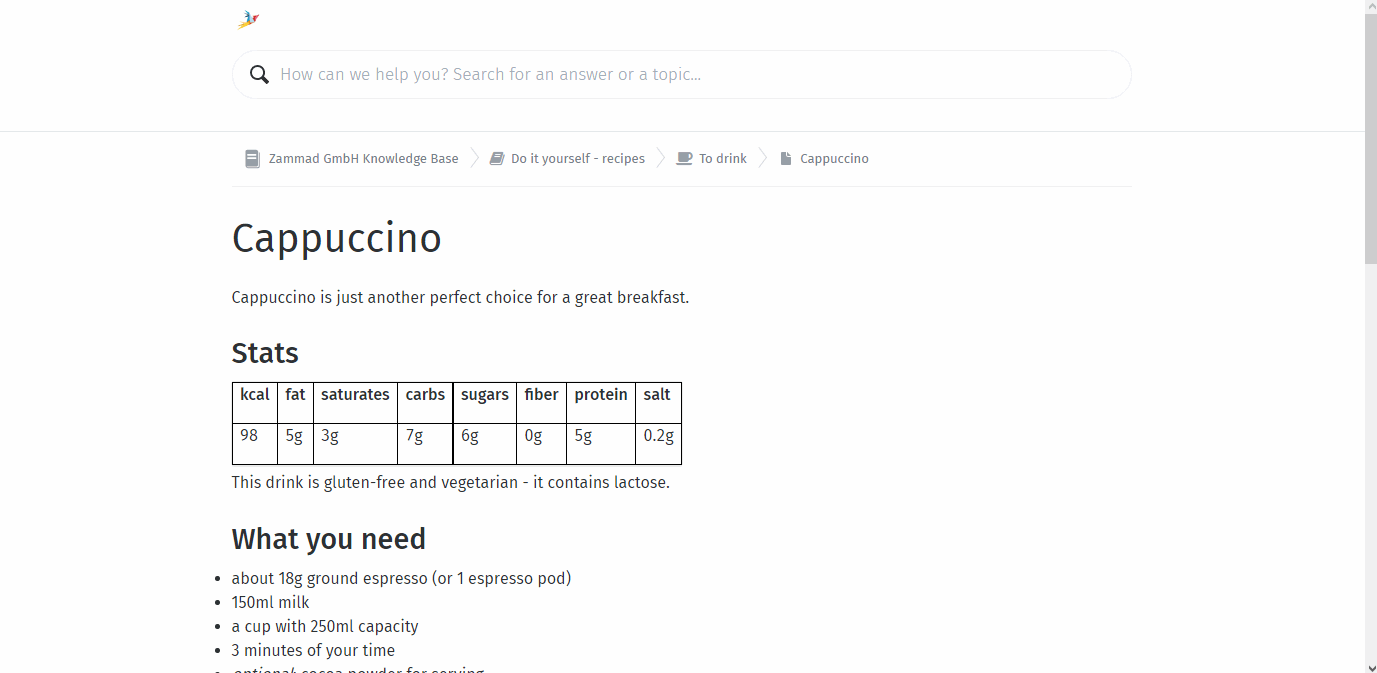
- Visibility
Set the visibility of an answer to control who can see an article, or schedule it to be published at a later date. Articles are color-coded according to their visibility:
Public (visible pour tout le monde)
Interne (visible seulement pour les opérateurs & rédacteurs)
Brouillon/planifié/archivé (visible seulement pour les rédacteurs)
Using answers in ticket articles¶
As soon as the knowledge base contains one or more answers, you can use these
just like text modules. Instead of :: just use ?? to open the search
modal. The search is done full text on both answer body and title in all
languages available.
If you’ve found what you’ve been looking for, simply hit your ENTER-Key to load the answer into the ticket article. This way you don’t have to throw URLs at your customer and provide the answer right away.
Loading answers into articles does not replace article content.
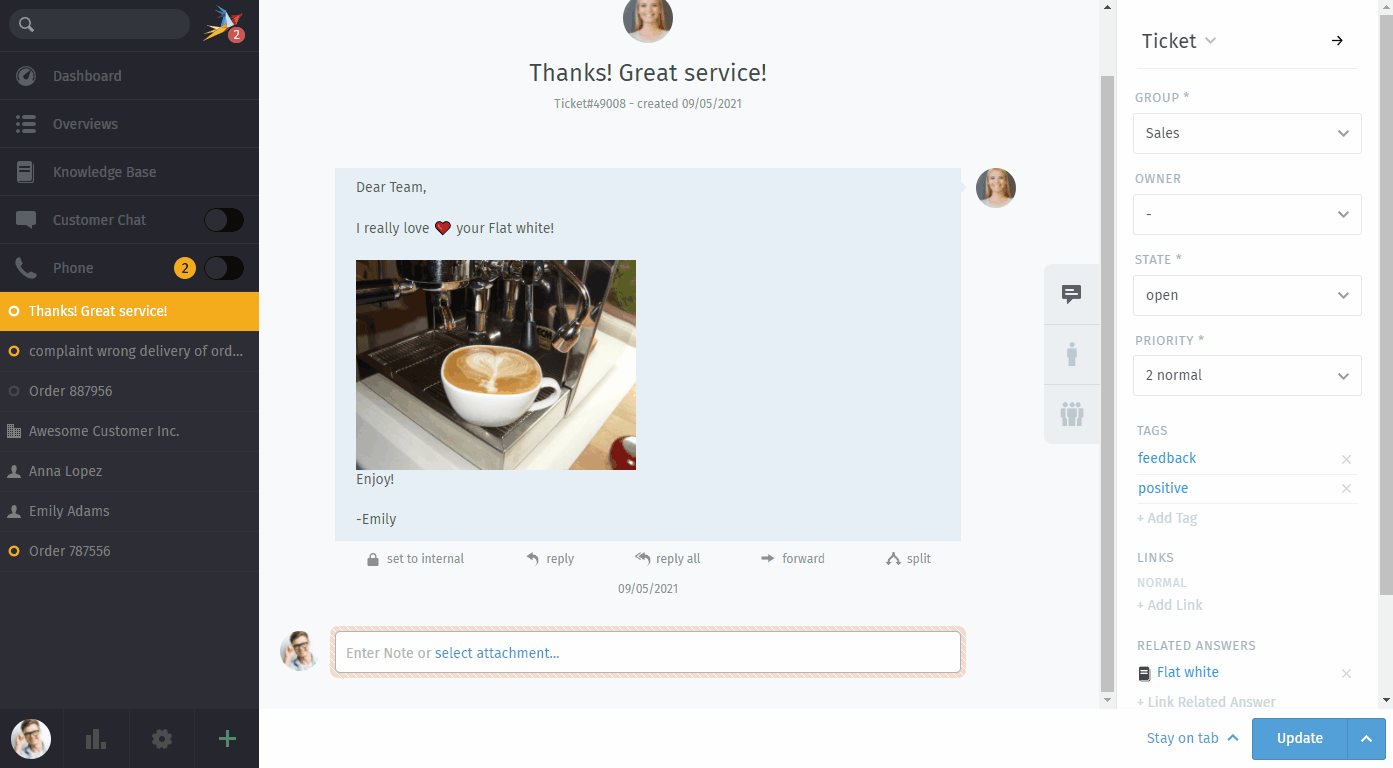
Use ?? to find and load knowledge base answers into ticket articles¶

